Reformat Data and Run Calculations with Functions in Make
Make offers a wide variety of functions that you can use to reformat your data, run calculations, and perform other useful functions. In this quick tutorial, we'll show you where you can find functions, and how you can use them.
November 16, 2022

When building no-code or low-code automations, a few simple calculations or reformatting steps can go a long way towards producing the right results.
Whether you need to reformat a lengthy timestamp into an easily read date, capitalize every name in a list, or run some mathematical equations, you can find all of the functions you need in Make (formerly known as Integromat).
In this quick tutorial, we’ll show you where you can find all of Make’s functions and we’ll show you a couple of examples of how to use these functions.
Accessing functions in Make
Formatting text and numbers in Make is very simple, and you don’t need to add any special module to do it.
You can format your data within any module in Make just by accessing the functions tabs.
For example, you can see a Slack module in the scenario pictured below that sends a message to a “tutorials” channel.
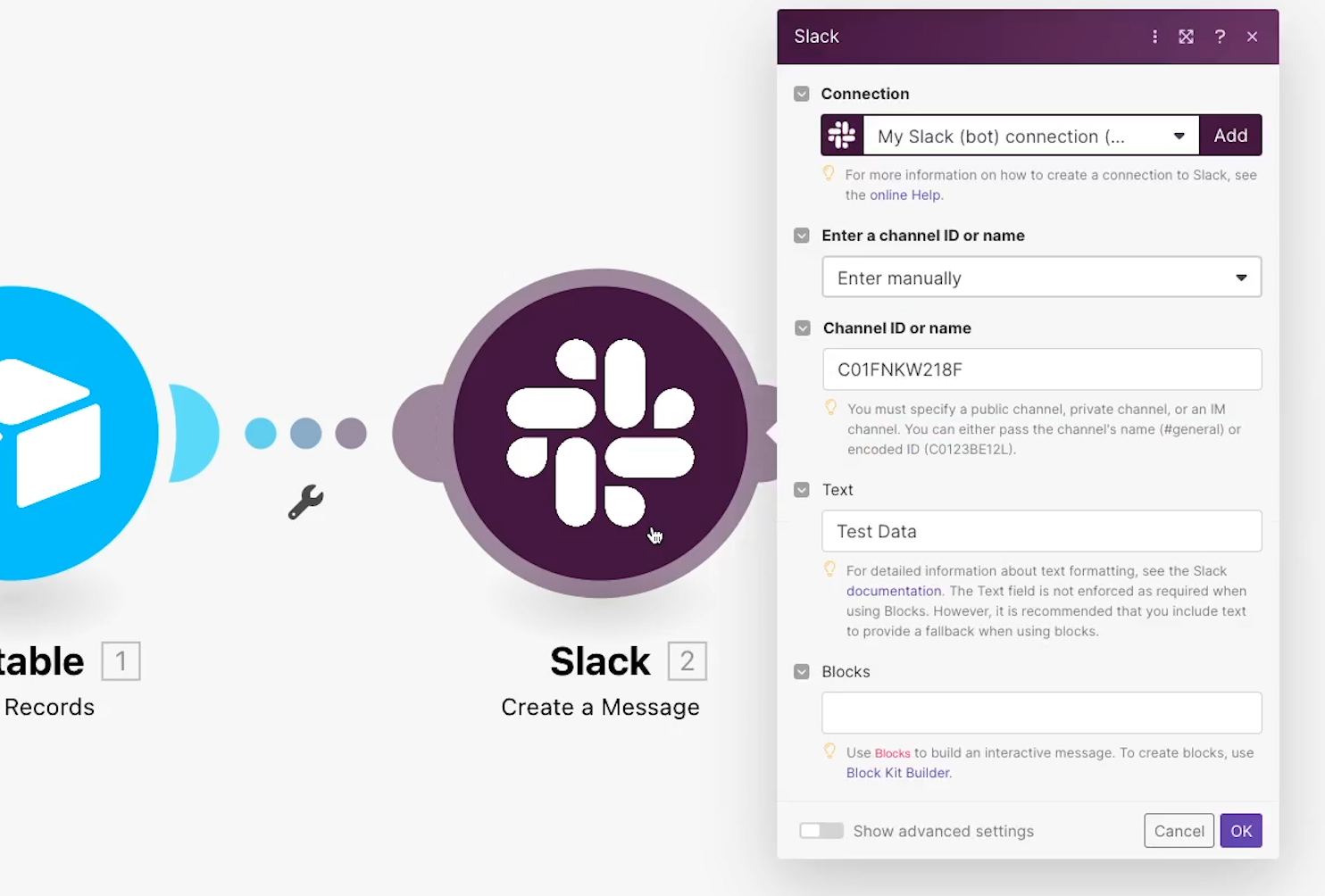
When you click on a text field in any Make module, a window pops up.

By default, the window opens to a tab labeled with a star. In this tab, you’ll find all of the data gathered in previous steps in the scenario.
Function categories and tabs
Each of the other tabs in this window contains several functions that you can use to reformat text, process dates and times, run mathematical calculations, or perform other useful actions.
All of the functions are grouped into broad categories.
Under the gear, you can find general functions. The X with an exponent denotes math functions.

The tab with the letter A contains text functions. Under the Calendar icon, you can find functions for working with date and time.
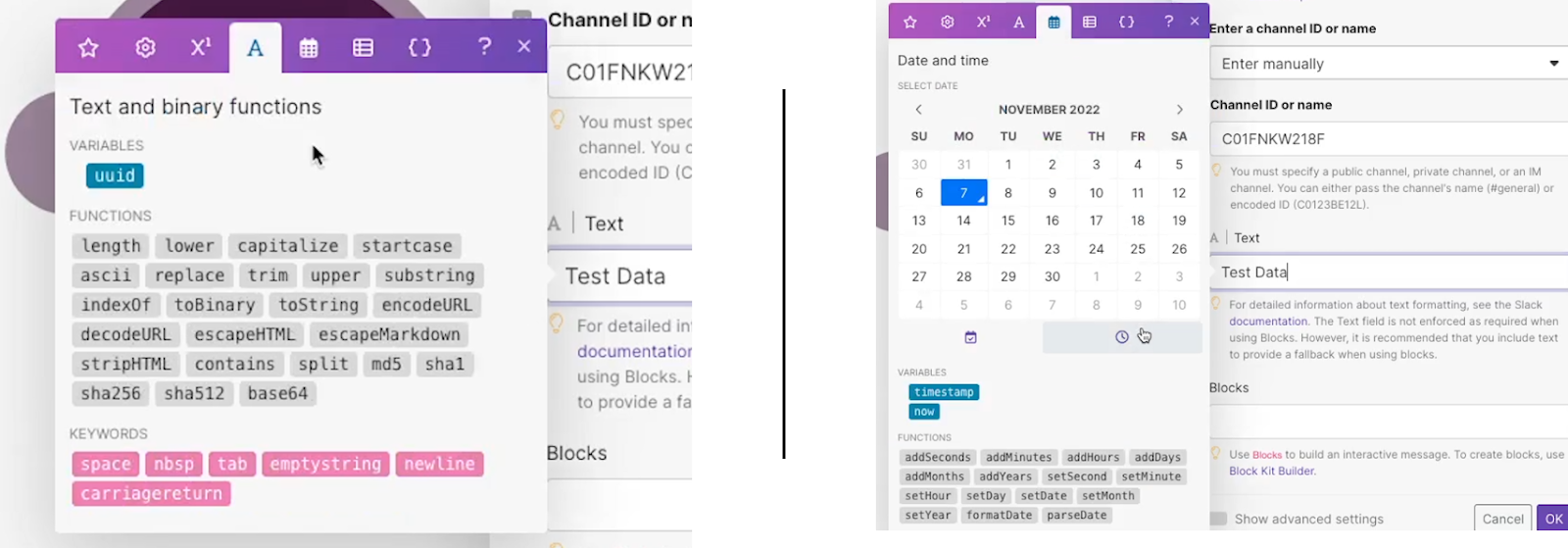
The icon that resembles a table contains functions for working with arrays. Finally, the curly brackets include some variables that refer to the scenario itself, like the scenario’s URL.
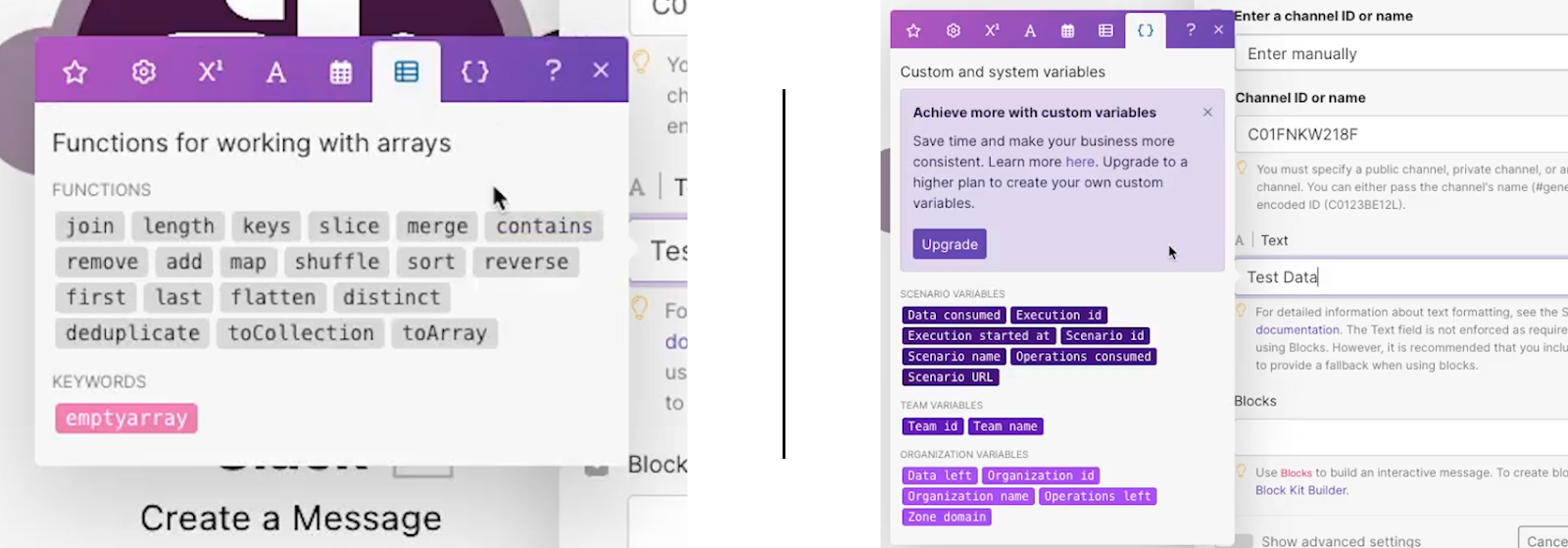
Using a function in Make: Capitalize
Now let’s take a look at how you can use these functions.
For example, open up the text functions and examine the “Capitalize” function.
When you hover over any of the functions, you’ll see additional details describing the function along with some examples.
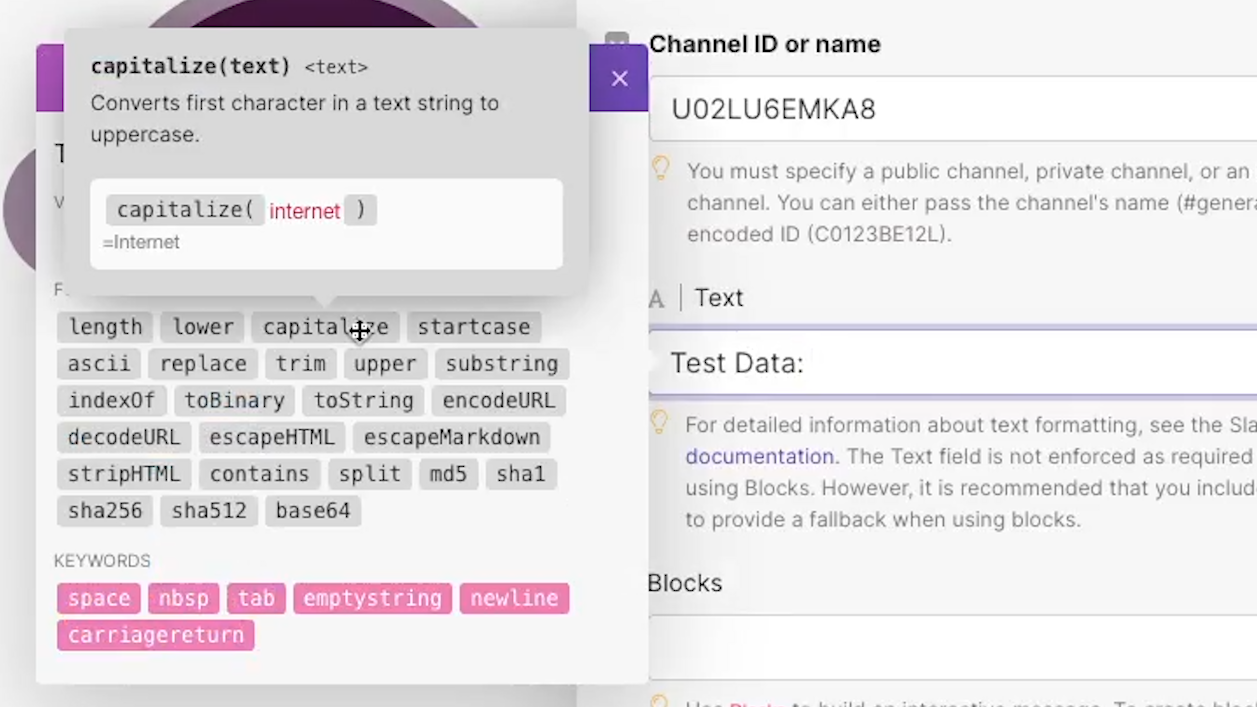
If you want to use the function, just click on it to add it to the active field. Then, insert the data that you want the function to use within the parentheses.
With the “Capitalize” function, you just need to insert the text that you want to capitalize inside the parentheses.
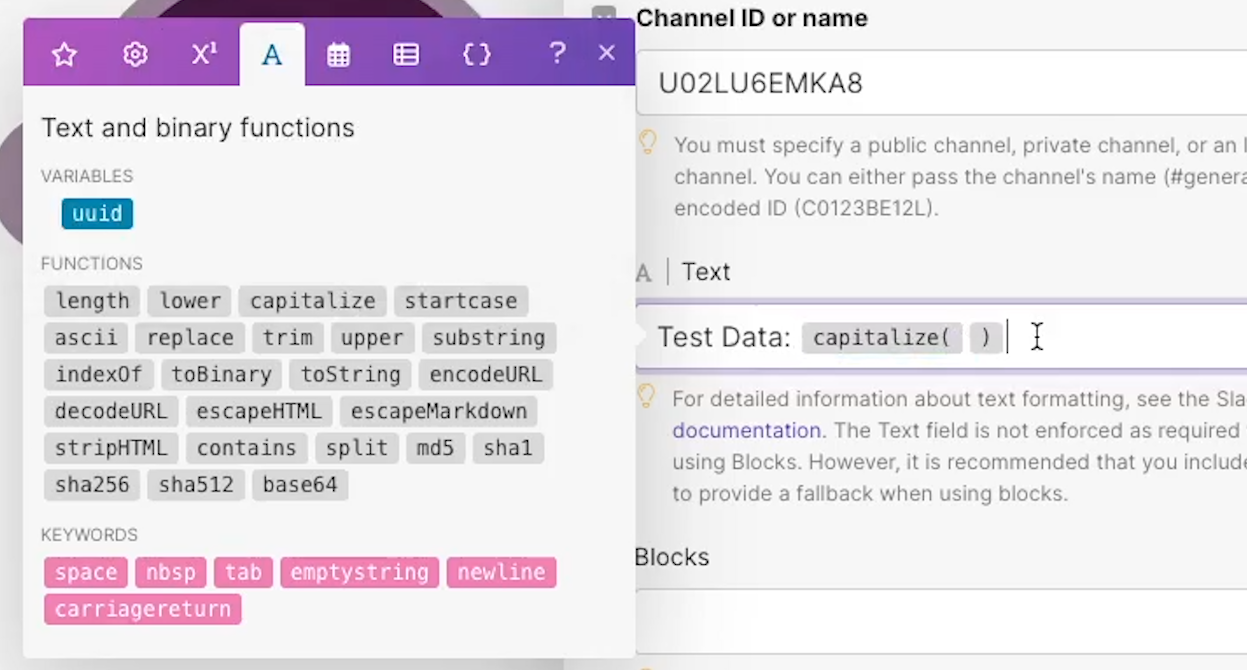
In our example pictured below, we want to make sure that everyone’s first name is capitalized, so we’ll enter the “first name” data block between the parentheses.

Once you’ve added your Capitalize formula, save your scenario and run it once to test your setup.
When we test our example scenario and check Slack, we can see that the message sent with the name properly capitalized.

Using a function with arguments: Add Days
Some functions will require you to provide additional data or parameters.
For instance, you may want to add 3 days to a date in your scenario.
Under the Date and time functions (calendar icon), choose “addDays”.

When you click on it, you can see that it inserts the function into your active field, along with a semicolon between the parentheses.
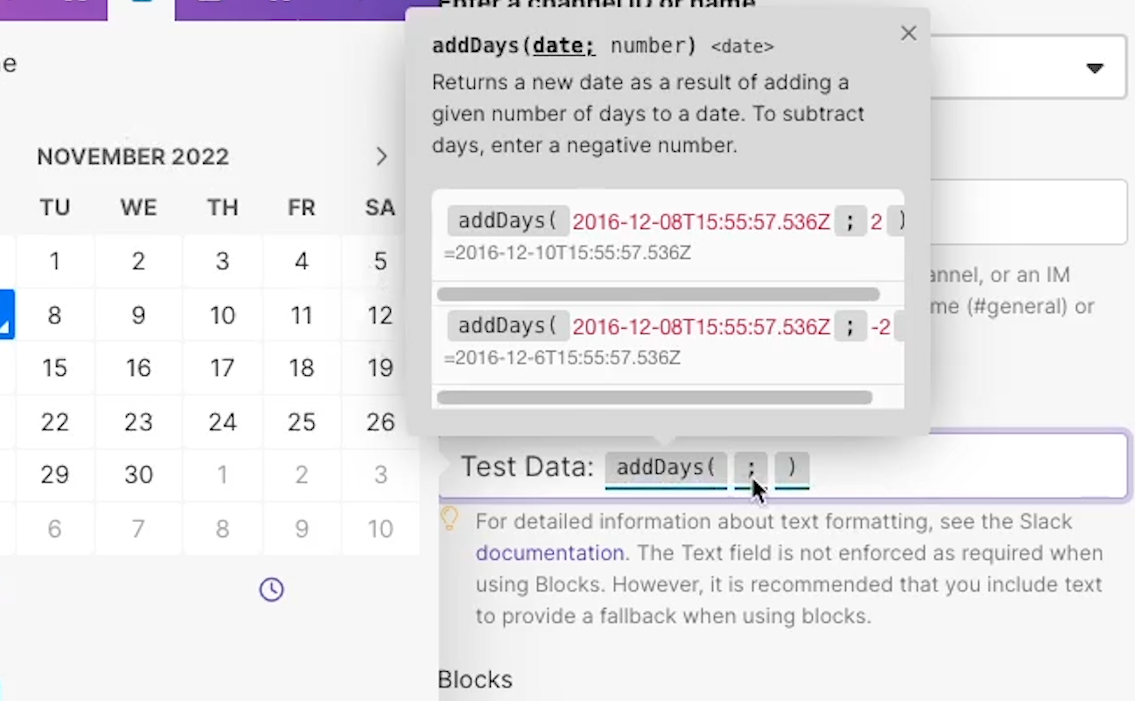
When a function includes a semicolon, that typically means you’ll need to insert data before and after the semicolon.
You can usually find instructions for how you need to complete the function along with examples when you hover over the function in question.
In this case, you’ll need to insert a date before the semicolon, and the number of days you want to add after the semicolon.
In our example, we’ll insert the date retrieved in our trigger (October 12th), and we’ll specify that we want to add 3 days by adding the number “3” after the semicolon.
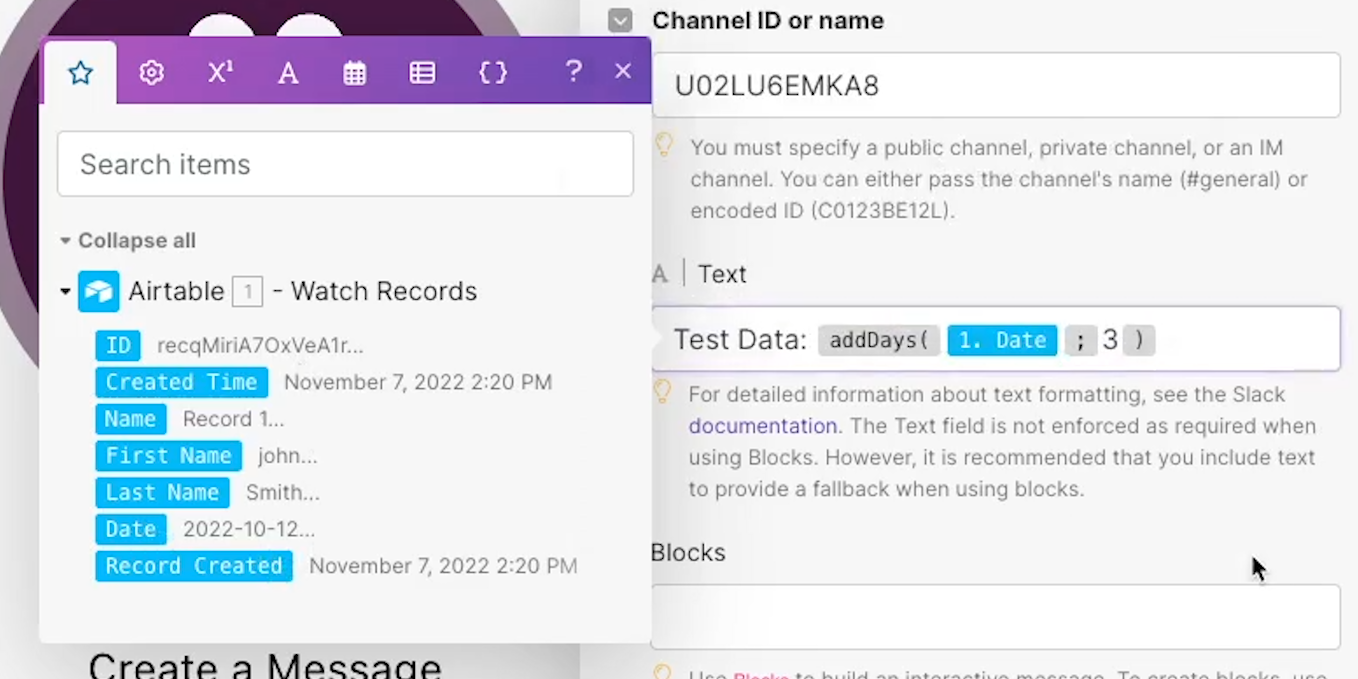
When we save and run the scenario to test it, we can see the correct date in the Slack message - October 15th.

Experiment with more functions in Make
Now you should be all set to start using functions in your Make scenarios. If you want to know more about any particular function, just hover over it for details and try it out. We’ll also post some additional tutorials soon with walkthroughs for specific functions.
If you’d like to learn more about building no-code and low-code automations, check out our blog or our YouTube channel. You can also follow XRay on Twitter, Facebook, or LinkedIn.





